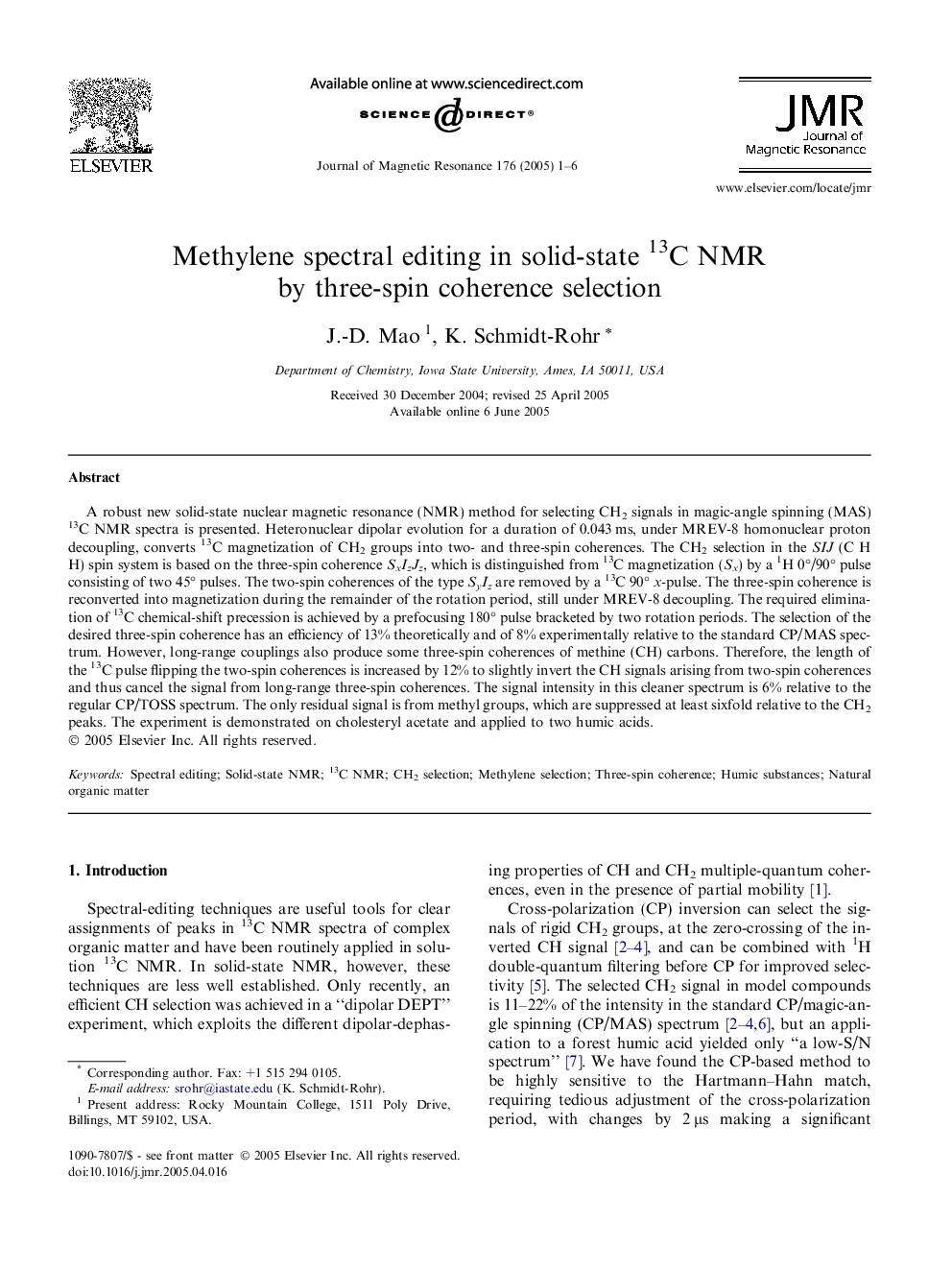| Article ID | Journal | Published Year | Pages | File Type |
|---|---|---|---|---|
| 9587391 | Journal of Magnetic Resonance | 2005 | 6 Pages |
Abstract
A robust new solid-state nuclear magnetic resonance (NMR) method for selecting CH2 signals in magic-angle spinning (MAS) 13C NMR spectra is presented. Heteronuclear dipolar evolution for a duration of 0.043 ms, under MREV-8 homonuclear proton decoupling, converts 13C magnetization of CH2 groups into two- and three-spin coherences. The CH2 selection in the SIJ (C H H) spin system is based on the three-spin coherence SxIzJz, which is distinguished from 13C magnetization (Sx) by a 1H 0°/90° pulse consisting of two 45° pulses. The two-spin coherences of the type SyIz are removed by a 13C 90° x-pulse. The three-spin coherence is reconverted into magnetization during the remainder of the rotation period, still under MREV-8 decoupling. The required elimination of 13C chemical-shift precession is achieved by a prefocusing 180° pulse bracketed by two rotation periods. The selection of the desired three-spin coherence has an efficiency of 13% theoretically and of 8% experimentally relative to the standard CP/MAS spectrum. However, long-range couplings also produce some three-spin coherences of methine (CH) carbons. Therefore, the length of the 13C pulse flipping the two-spin coherences is increased by 12% to slightly invert the CH signals arising from two-spin coherences and thus cancel the signal from long-range three-spin coherences. The signal intensity in this cleaner spectrum is 6% relative to the regular CP/TOSS spectrum. The only residual signal is from methyl groups, which are suppressed at least sixfold relative to the CH2 peaks. The experiment is demonstrated on cholesteryl acetate and applied to two humic acids.
Related Topics
Physical Sciences and Engineering
Chemistry
Physical and Theoretical Chemistry
Authors
J.-D. Mao, K. Schmidt-Rohr,
